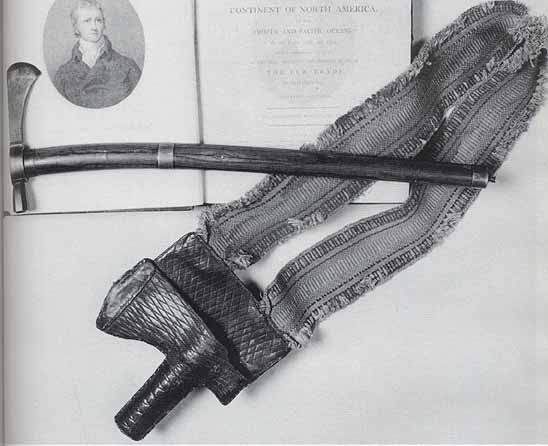Mark Baker has used the term "frontier trash" in his writings to describe the type of folks he and his friends portray. When asked about Brant's men, I sometimes use the same term.
I've likened them to the men that Mel Gibson and Tcheky Karyo recruit from the tavern in The Patriot. The rough, backwoods guys that Heath Ledger looks down on in the movie.
Only 2 of Brant's men, Richard Dingman and George Barnhart, were men of property. The rest were of lower financial station and some downright poor. All were farmers. They came from the western Catskill Mountains, the valleys of the Susquehannah and Delaware rivers. Rough country breeds rough men.
Our camps need to be minimal. Not only for reasons previously explained, but because these guys were BROKE. Everything they had was taken from them. This is likely half the reason they dressed as Indians (the other half being disguise). Indian dress was cheap and the men were destitute:
"...no doubt he will bring those white people who have been fighting with him all this summer. We are told they are naked..."
Taylor & Duffin to Daniel Claus, 26 Oct. 1778
"Last sunday also came to this place eleven men who served last year under Brant as volunteers and for want of clothing and ammunition were dismissed by him until spring..."
Daniel Claus to Gen. Haldimand, 9 December 1779"(Brant) entreats me much to remind your Excellency about the clothing for white men that are with him, as they are quite naked and could not be expected to go on Service without covering."
Daniel Claus to Gen. Haldimand, 17 May 1779Haldimand wrote back saying he was sending:
"100 suits of clothing, leggings & blankets."
20 May 1779We have at least one primary source of documentation showing they did dress as Indians:
"Dear General; I have the honour to Informe you that this Morning a Scout of mine Came in who have been Peace Down the Suscohanna taking their rout round by the Butternuts and Returnd by the way of one Tunecliffts who they have, with fourteen or fifteen other Torrys, Brought In Likewise two of Brant's party, who ware Collecting Cattel at the Butternuts for Brant.
Ware Clothed and painted Like Indians..."
Colonel Alden's Report To General, Stark.
Head Quarters, Cherry Valley Aug'st 12th 1778. So what should we look like?
We should NOT look very uniform. Some of us in white man's clothing, some in Indian dress.
We should wear our clothing in (NOT artificially) so that we look like we've been around.
We shouldn't buy new shirts, leggings, etc all that often.
We should patch our clothing and gear (knapsacks, etc) rather than replace it.
We should take care of our firelocks, but NOT polish them like Regulars.
We should use Runaway ads to show us what lower class people wore.
In short, we should look like crap...





